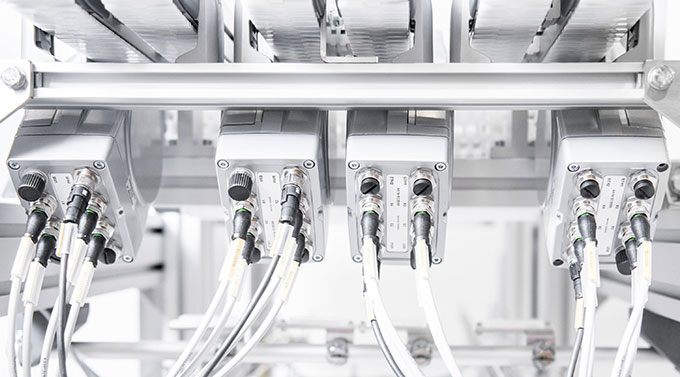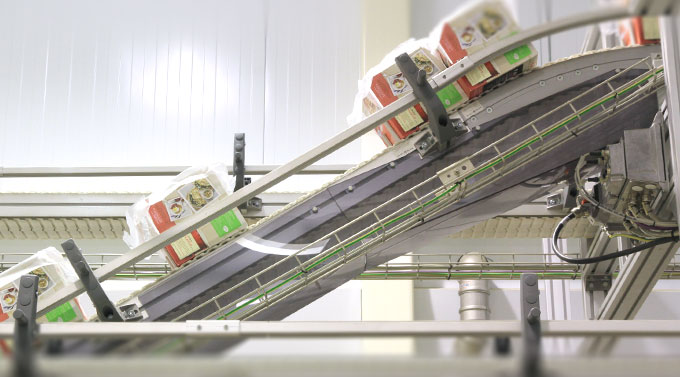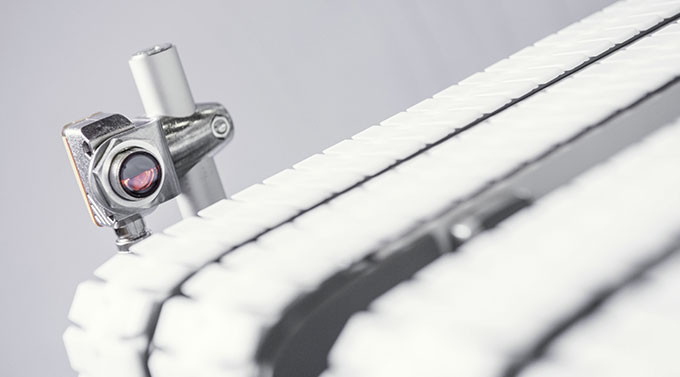
There are several factors that affect the power consumption in the manufacturing industry. One of them is to choose the right motor for the conveyor line and to operate the motor in the correct way. This helps to decrease the consumption, improve efficiency and, in turn, save money. A suitable motor for the manufacturing industry should be energy efficient, powerful and silent. In this blog article, I will share some tips on how to choose the right motor for your specific conveyor system.
Many parts of the manufacturing process can be energy efficient
It is becoming increasingly important to save both money and environmental resources in the manufacturing industry. An excellent way to do that is to cut down on the electricity consumption. There is a lot of equipment in the manufacturing industry that has the potential to be more energy efficient, such as ovens and machines. Also, the production flow solution has a large potential to decrease the overall energy consumption.
A motor with fixed speed vs a motor with variable speed
 In order to decrease the power consumption of the production flow solution, it is crucial to choose the right motor with the right control system. There are two different motor types to choose from: a motor with fixed speed where the only control is on and off, or a motor with variable speed that can be adjusted to run with desired speed.
In order to decrease the power consumption of the production flow solution, it is crucial to choose the right motor with the right control system. There are two different motor types to choose from: a motor with fixed speed where the only control is on and off, or a motor with variable speed that can be adjusted to run with desired speed.
An asynchronous motor needs to run at full capacity
An asynchronous motor with fixed speed constantly runs at the same speed and cannot change or be adapted to the production. When choosing a motor with fixed speed, it is important to not choose a motor that has too much capacity. Many actors in the manufacturing industry are worried that the motor will not be sufficient in the long run. Therefore, many choose a larger motor in case the production, or the products, will change in the future. This could mean that the manufacturers only use a small part of the motors’ capacity and, therefore, buy a more expensive motor than they actually need. Also, a motor that is not used to its full capacity is a lot less energy efficient compared to a motor that is used to its full capacity. However, a fixed-speed motor with the right size can operate with high efficiency.
In order to choose the right fixed-speed motor, one must know that the same speed and load will be maintained at all times during production, which can be a challenge in the manufacturing industry. The advantages of fixed speed motors are that they have a lower purchase cost and have a simple design, which makes them robust and less prone to break down. One advice is to have a simple control with a sensor that actually stops the motor when no products are on the conveyor.
A variable speed motor is adaptable to the production needs
A motor with variable speed, that can be both an asynchronous motor and a synchronous motor, is adaptable to the production needs which helps save energy. A variable speed motor with some extra capacity for a specific production can still maintain its efficiency since the motor can be adjusted to the production instead of the other way around. In addition, a control system can analyze the movements of the products on the production line and vary the motor’s speed. Consequently, its electricity consumption varies based on its load. The control of the motor’s speed leads to higher efficiency. This could mean, for example, adjusting the speed of the production line to allow a sufficient number of products to enter the machines at the right time, instead of constantly running the production line at the same speed. A variable speed motor is initially more costly compared to a fixed speed motor since it always contains extra components such as a well-developed control system. One advice when controlling a line with variable speed is to avoid situations where products accumulate on the conveyor, as accumulation is one of the biggest reasons for energy waste.
Friction, bends, product weight, and inclination
 Other factors affecting the production line’s power consumption are, for example, friction, the size, and the number of bends, the length of the conveyors, product weight and inclination. For example, using wheel bends instead of plain curves can help decrease friction. This is described in more detail in our blog article about friction. Thus, a smart layout can also contribute to a decreased energy consumption.
Other factors affecting the production line’s power consumption are, for example, friction, the size, and the number of bends, the length of the conveyors, product weight and inclination. For example, using wheel bends instead of plain curves can help decrease friction. This is described in more detail in our blog article about friction. Thus, a smart layout can also contribute to a decreased energy consumption.
European classifications for energy efficient motors
Energy efficient motors are not only desirable in order to save money and resources, they are also necessary in order to follow the strict regulations coming from, for example, the European Union. The requirements for energy efficient electric motors have been raised in accordance with the EU Ecodesign Directive. Similar requirements already exist in countries such as the United States, Australia, and Brazil. The new classifications for energy efficient electric motors have the designations IE1, IE2, IE3 and IE4 where IE4 represents the highest efficiency. It is predicted that within a few years, asynchronous motors will not be allowed to operate in the manufacturing industry anymore since they will not be able to live up to the EU regulations in the future. So it is quite safe to say that synchronous drives will be more common in the future.
Energy management opens up for different control possibilities and makes the energy consumption visible
 There is a lot of development regarding different methods to control the motors. There are possibilities to control them with, for example, sensors that provide various types of feedback from the production line that are used to control the motors in an optimal way. There is also an increasing need to extract information from the motors about the production and the overall energy consumption. To achieve this, the motor needs an energy meter, which often is included in a synchronous motor. However, on the most basic fixed speed asynchronous motor, it must be installed separately.
There is a lot of development regarding different methods to control the motors. There are possibilities to control them with, for example, sensors that provide various types of feedback from the production line that are used to control the motors in an optimal way. There is also an increasing need to extract information from the motors about the production and the overall energy consumption. To achieve this, the motor needs an energy meter, which often is included in a synchronous motor. However, on the most basic fixed speed asynchronous motor, it must be installed separately.
FlexLink designs motors and production lines with low energy consumption
FlexLink focuses a lot on designing production flow solutions that are reliable, cost-efficient and have low energy consumption. We research new motor technologies that have limited energy consumption, take up less space and that are easy to control. Already now we have options with synchronous motors that fulfill IE4. Also, we work hard to design efficient production layouts so the motors can be used in a proper way. With our extensive product range, we aim to be a reliable partner in creating efficient productions that will benefit both the manufacturer and the environment.
I hope you enjoyed reading my blog article about different factors that affect the electricity consumption in the manufacturing industry. Feel free to contact me with questions or visit our website or social media channels for more information. Also, don’t forget to pop by our blog for more interesting articles.


Hi Anders, I am familiar with the traditional conveyors, such as belt conveyors and roller conveyors. I know, if a complicated tranditional conveyor system includes several curves, it needs several motors. So I want to know whether your Flexlink conveyor system also need several motors when there are several curves?
Thanks.
Hi Jim
One conveyor has normally one motor, the only exception at the time for this comment is the spiral elevator that has two motors.
So If Your transport need cannot be solved with one conveyor due to many curves The conveyor needs to be divided in to two conveyors. A transfer unit between the conveyors will in that case be needed.
If You use our wheel curves You will be able to have real big number of curves in a conveyor though so give us a try – an example of this is the Alpine type elevators where You can see example of 10 or even more 180 degree curves. The limit on number of curves is calculated in our Chain Pull Tool and depends of the load, speed, materials selected, length, number of curves and incline. Just ask Your closest re-seller and they will help You out.
So the general advise when having a lot of curves – use the wheel bends, and avoid using the slide curves to get maximum numbers of curves in a conveyor.
Br / Anders